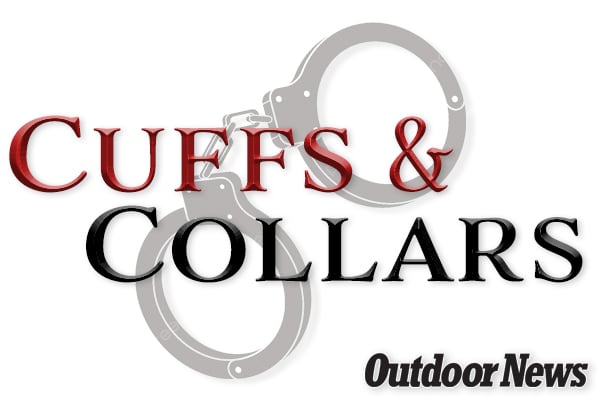Habitat planning for bad weather is key to supporting Iowa’s pheasant populations – Outdoor News

The first snow of the season is a popular event with pheasant hunters because it often sends the birds to cover where hunters expect to find them. And while a little snow is good, too much snow can be bad, burying waste grains that are an important food source and collapsing marginal habitat.
This was the scenario Iowa experienced from 2007 to 2011 when winters were averaging 30-50 inches of snow, and the spring nesting season was averaging 7-12 inches of rain. The statewide pheasant population survey was knocked down from 27 birds per 30-mile route, to an all-time low of seven.
“It was a double whammy,” said Todd Bogenschutz, upland wildlife biologist for the Iowa Department of Natural Resources. “It was unprecedented for us – going back to the 1960s we had never had five years in a row of bad winters followed by wet springs. The closest thing comparable was three years in a row in the early 1980s.”
MORE UPLAND BIRD COVERAGE FROM OUTDOOR NEWS:
Is it ever too cold to hunt your dog? The answer involves many factors
Slow down and let your dogs work for roosters
Urban-rural Pheasants Forever partnership connects city and country to build tomorrow’s hunters
The impact on Iowa’s pheasant population prompted the Iowa Legislature to convene a pheasant study group to looking into ways to support Iowa’s pheasant population. The group produced a habitat design recommendation, called Pheasant SAFE (State Acres For Enhancement), that was an amped up version of CRP (Conservation Reserve Program) combining winter cover, with food plots and nesting coverall on one field.
“Pheasant SAFE put the bedroom, living room and kitchen all on one CRP property,” Bogenschutz said.
A piece of the Pheasant SAFE design that serves as a thermal escape during severe winters is a block planting of switchgrass or shelterbelts if landowners so choose.
Shelterbelts are multiple rows of trees or shrubs that offer travel corridors, food and escape cover for pheasants and other wildlife species. The woody vegetation component isn’t a requirement to enroll in Pheasant SAFE.
“Eight rows of shelterbelts provide awesome winter cover,” Bogenschutz said. “A block of switchgrass is required and we encourage a well-designed food plot. On the nesting side, we’re encouraging pollinator seeding that also benefits bees and monarchs – you want insects around for food. Switchgrass, or, if you’re enrolling a wetland, cattails, are great winter habitat. The woody shelterbelts also provide overwinter habitat for bees and songbirds. There will also be some deer and cottontail use as well.”
Landowners interested in adding this pheasant friendly habitat can learn more by clicking the 100 Years of Pheasant Hunting graphic at www.iowadnr.gov/pheasantsurvey, and scrolling to the Helping Landowners with Wildlife Goals section. Links include information on technical assistance and local DNR and Pheasants Forever contacts.
“These SAFE sites are a great food source and minimizes bird movement when we have a bad winter,” Bogenschutz said. “When pheasants are exposed, that’s not good. SAFE keeps them in cover, allows them to walk in and out of the food plot and minimizes their exposure, which leads to better survival and better nesting.
“And they’re great places to hunt.”
Today, Iowa has about 1.6 million acres of CRP, of which, 494,000 acres are enrolled in a SAFE practice.
“Having quality habitat that includes food, nesting cover and thermal corridors allows for pheasants to survive harsh winters and wet springs, and to recover their populations in about half the time as areas with poor habitat,” Bogenschutz said.
Installing the different pieces of the Pheasant SAFE plan usually occurs in the spring, unless the area is being converted from existing CRP or other habitat types that require it to be sprayed in the fall. Native prairie plant seeds can be broadcast on frozen ground in February and March, or planted conventionally after the ground thaws.
“You’ve got options, depending upon your flexibility as a landowner, and that’s where we can help,” he said.
The Iowa DNR and Pheasants Forever are celebrating 100 years of pheasant hunting in the Hawkeye State. The first season was held Oct. 20-22, 1925, when 13 counties in north central Iowa were opened to pheasant hunting. Hunters were allowed a three-rooster limit, for a half-day of hunting. An estimated 75,000 hunters participated.
Hunters can commemorate the 100th anniversary by purchasing a hard card featuring Iowa Pheasants Forever Print of the Year. Residents can begin purchasing licenses for 2025 on Dec. 15.
Information on places to hunt, the August roadside survey results and more is available online by clicking the 100 Years of Pheasant Hunting graphic at www.iowadnr.gov/pheasantsurvey.







